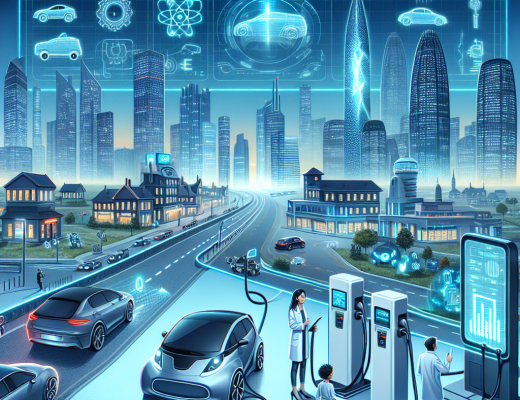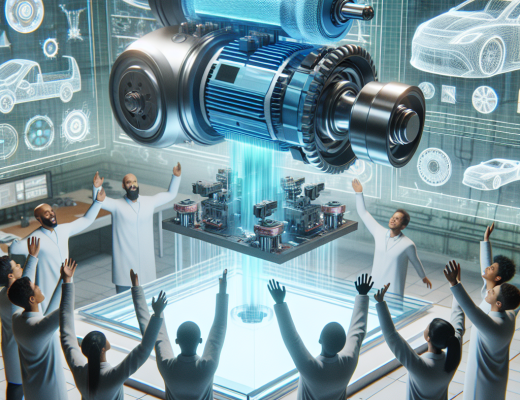Sustainability in power generation systems relies on the effective storage of energy. Understanding how energy storage plays a crucial role in stabilizing the grid, managing peak demand, integrating renewable energy sources, and enhancing overall system efficiency can help optimize power generation processes. By exploring the various methods of energy storage available, you can improve the reliability and sustainability of power generation systems for a brighter energy future.
The Role of Energy Storage in Power Generation
Balancing Supply and Demand
One key role of energy storage in power generation is balancing supply and demand. Energy storage systems help store excess energy during times of low demand, such as late at night when most people are asleep. This stored energy can then be used during peak hours when demand is high, reducing the strain on the grid and preventing blackouts. By managing the fluctuations in supply and demand, energy storage systems play a crucial role in ensuring a reliable and stable power supply for homes and businesses.
Ensuring Grid Stability
Demand for electricity can vary throughout the day, putting stress on the grid and making it challenging to maintain stability. Energy storage plays a vital role in ensuring grid stability by providing backup power during sudden surges in demand or unexpected drops in supply. Having energy storage systems in place can prevent disruptions, protect against power outages, and support the integration of renewable energy sources like solar and wind power.
Role: Energy storage systems act as a buffer between the inconsistent nature of renewable energy sources and the constant demand for electricity. They help regulate the flow of energy, mitigating the risk of grid failures and ensuring a more resilient and efficient power generation system overall.
Types of Energy Storage Systems
Little in the world of energy storage systems, it is crucial to understand the various types available to effectively meet the demands of power generation. Below are some of the most commonly used types of **energy storage systems**:
| Battery Energy Storage Systems (BESS) | Pumped Hydro Storage (PHS) |
| Compressed Air Energy Storage (CAES) | Power-to-Gas (P2G) |
| Thermal Energy Storage | Flywheel Energy Storage |
Battery Energy Storage Systems (BESS)
Systems that utilize **BESS** store electrical energy in rechargeable batteries for later use. These systems are important for storing renewable energy generated from sources such as solar and wind power. By capturing and storing excess energy during off-peak times, **BESS** ensure a constant power supply even when renewable sources are not actively generating electricity. Knowing how to efficiently utilize and manage **BESS** is crucial for ensuring a stable and reliable power supply.
Pumped Hydro Storage (PHS)
Any discussion of energy storage systems would be incomplete without mentioning **PHS**, one of the oldest and most widely used methods. **PHS** systems store energy by pumping water to a higher elevation when energy demand is low, and releasing it through turbines to generate electricity when demand is high. The ability to store vast amounts of energy for extended periods makes **PHS** a highly effective and proven method of energy storage.
To effectively operate a **PHS** system, a suitable location with varying elevations and access to water sources is required. These systems are known for their high efficiency, long lifespan, and scalability, making them a reliable choice for large-scale energy storage.
Compressed Air Energy Storage (CAES)
Energy storage systems like **CAES** operate by compressing air and storing it in underground caverns or tanks, which is then released and expanded through turbines to generate electricity during peak demand periods. **CAES** systems are known for their **high efficiency** and the ability to quickly respond to fluctuations in energy demand.
This method of energy storage is particularly beneficial for balancing the intermittency of renewable energy sources and ensuring grid stability. **CAES** systems can provide a sustainable and reliable solution to meet the energy storage needs of modern power generation systems.
Benefits of Energy Storage in Power Generation
Increased Efficiency
For power generation systems, energy storage plays a crucial role in increasing efficiency. By storing excess energy during times of low demand and releasing it during peak hours, you can optimize the operation of power plants. This leads to less wasted energy and overall improved efficiency in the system.
Reduced Emissions
Increased energy storage can also contribute to reduced emissions in power generation. By utilizing stored energy from renewable sources such as solar or wind power, you can decrease the reliance on fossil fuels. This transition to cleaner energy sources results in lower emissions of greenhouse gases and other pollutants.
The reduction in emissions not only benefits the environment but also your health and well-being. By decreasing the amount of harmful pollutants released into the atmosphere, you are helping to create a cleaner and healthier environment for all.
Improved Reliability
Storage in power generation systems enhances reliability by providing you with a backup power source. In cases of sudden outages or emergencies, stored energy can be quickly deployed to ensure a continuous electricity supply. This added reliability can prevent disruptions and potential damages caused by power failures.
With energy storage, you can also integrate intermittent renewable energy sources more effectively into the grid. By storing energy when the wind is blowing or the sun is shining, you can smooth out the variability of these sources and ensure a consistent power supply.
Challenges and Limitations of Energy Storage
Cost and Economics
To ensure a reliable and efficient energy storage system, you must consider the cost and economics associated with it. Energy storage technologies can be expensive to implement, especially on a large scale. The initial investment required for the infrastructure and equipment needed for energy storage can be a significant barrier for many power generation systems.
Technical Challenges
To overcome the technical challenges of energy storage, you need to address issues related to the integration of different storage technologies and the efficiency of energy conversion processes. Economics plays a crucial role in determining the feasibility of energy storage solutions, as the costs associated with research, development, and implementation can be substantial.
Challenges such as energy loss during the storage and retrieval processes, limited cycle life of batteries, and difficulties in scaling up technologies can hinder the widespread adoption of energy storage in power generation systems. Finding solutions to these technical challenges is important to maximize the benefits of energy storage and ensure its long-term sustainability.
Environmental Concerns
When considering the implementation of energy storage technologies in power generation systems, you must also address potential environmental concerns. Challenges such as the use of hazardous materials in some storage technologies, the environmental impact of large-scale energy storage projects, and the disposal of old and inefficient storage systems need to be carefully evaluated.
It is crucial to prioritize the development of energy storage technologies that have minimal environmental impact and are sustainable in the long run. By addressing these environmental concerns, you can ensure that energy storage plays a positive role in reducing emissions and combating climate change.
Applications of Energy Storage in Power Generation
Renewable Energy Integration
Now, **the** integration of renewable energy sources like solar and wind power into the grid has presented challenges due to their intermittent nature. Energy storage systems play a crucial role in smoothing out the variability of these energy sources by storing excess energy when production exceeds demand and releasing it when needed. This helps **ensure** a consistent and reliable power supply, reducing the reliance on fossil fuels and lowering greenhouse gas emissions.
Peak Shaving and Load Management
Energy **storage** systems are also used for peak shaving and load management. **The** storage systems store excess energy during periods of low demand and discharge it during peak hours when electricity rates are typically higher. By doing so, **you** can reduce **your** overall energy costs by avoiding expensive peak-time electricity rates and improve grid stability by alleviating stress during high-demand periods.
Plus, **you** can also participate in demand response programs where **your** energy storage system can be used to reduce **your** electricity consumption during peak hours, contributing to a more sustainable and efficient grid.
Backup Power Systems
Integration **of** energy storage systems into backup power systems is crucial for ensuring uninterrupted power supply during outages or emergencies. **You** can rely on **your** energy storage system to provide backup power to **your** home or business when the main grid fails, keeping crucial systems running and **you** safe.
Power **your** critical loads with stored energy from **your** system until grid power is restored, providing **you** with peace of mind knowing that **your** operations can continue without interruption.
Emerging Trends in Energy Storage Technology
Once again, the field of energy storage technology is rapidly evolving to meet the demands of modern power generation systems. These emerging trends aim to improve efficiency, reliability, and sustainability in energy storage solutions.
Advancements in Battery Technology
Technology advancements in battery technology are driving significant improvements in energy storage systems. New battery designs with higher energy densities, faster charging capabilities, and longer lifespans are being developed to meet the growing needs of the power sector. These advancements are crucial for enhancing the overall performance and cost-effectiveness of energy storage in power generation systems.
Development of New Energy Storage Materials
The development of new energy storage materials is a key focus area in advancing energy storage technology. Researchers are exploring nanostructured materials and composite materials that offer enhanced energy storage capacities and improved stability. By utilizing innovative materials, energy storage systems can achieve higher efficiency levels and greater environmental sustainability.
Materials science plays a vital role in shaping the future of energy storage technology. With ongoing research and development efforts, new materials are being engineered to address the challenges of energy storage, such as limited storage capacity and resource scarcity. By leveraging the unique properties of advanced materials, the next generation of energy storage systems can deliver enhanced performance and reliability.
Integration with Smart Grids
An integrated approach with smart grids is revolutionizing energy storage technology, enabling seamless communication and control of power flow. By incorporating advanced monitoring and control systems, energy storage devices can efficiently respond to dynamic grid conditions and optimize energy usage. This integration enhances the reliability and stability of power generation systems, leading to a more resilient and sustainable energy infrastructure.
Understanding the interplay between energy storage and smart grids is important for leveraging the full potential of these technologies. By optimizing the coordination between energy storage systems and smart grid components, power providers can enhance grid flexibility, enable demand response capabilities, and accelerate the transition towards a cleaner energy future.
Final Words
So, as you have learned, energy storage plays a crucial role in power generation systems by providing a reliable and efficient way to store excess energy for later use. By integrating energy storage technologies into power grids, we can improve grid stability, increase renewable energy integration, and reduce greenhouse gas emissions. It is clear that energy storage is a key solution to the challenges faced by modern power systems, and its importance will only continue to grow as we transition to a more sustainable energy future.





